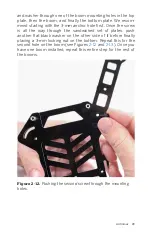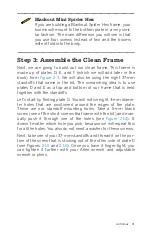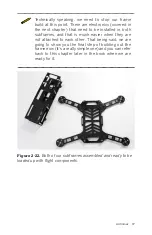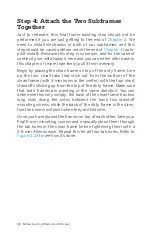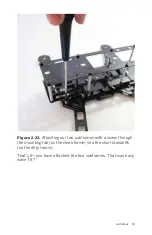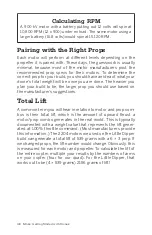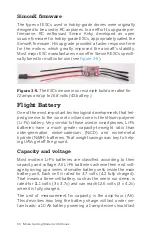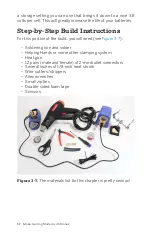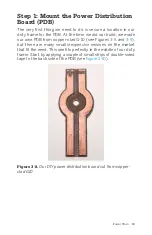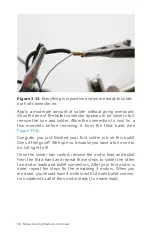
Figure 3-1.
Slip is the difference between the Geometric Pitch
and the Effective Pitch.
The higher the pitch, the more air will pass through the propeller
with each revolution. Passing more air through the prop results
in a higher level of thrust. This is great if you need more lift on
your aircraft, but be warned that this results in less efficiency,
because the aircraft’s motors need more energy (in the form of
battery power) to spin a higher-pitched prop. Moving up to a
higher-pitched prop can reduce your overall flight time, as a
result of gaining more lift.
Propellers come in all types of size and pitch combinations,
each with their own pros and cons. Some are more efficient,
while others generate more lift. Typically, the higher the pitch
and/or the larger the prop, the more lift that is generated. If you
have a heavy aircraft, or one that needs to fly at high speeds, a
high-pitch or large prop would be ideal. However, if your needs
are for a longer flight time with a lighter payload, something with
a lower pitch will probably be best for you. Increased lift does
come at a price, though: the efficiency of the prop.
The size and pitch specification is typically something like
0845P or 08X4.5P on the side of the prop itself, near the hub
(see
). The first two numbers are the size, 8 (inches),
followed by the pitch, 4.5°. The P shows that it is a pusher pro-
peller. Some companies call pusher props left-handed props
and may mark them with an L or R (for reverse) in the prop
name instead of the P. Tractor props have no letter at the end;
their designation would simply be 0845.
Power Train 43
Summary of Contents for Belinda Kilby
Page 1: ......
Page 3: ...Make Getting Started with Drones Terry Kilby and Belinda Kilby...
Page 26: ......
Page 90: ......
Page 126: ......
Page 153: ...Figure 9 10 Compass setup Figure 9 11 Compass calibration ArduPilot Mega APM Setup 141...
Page 198: ......

